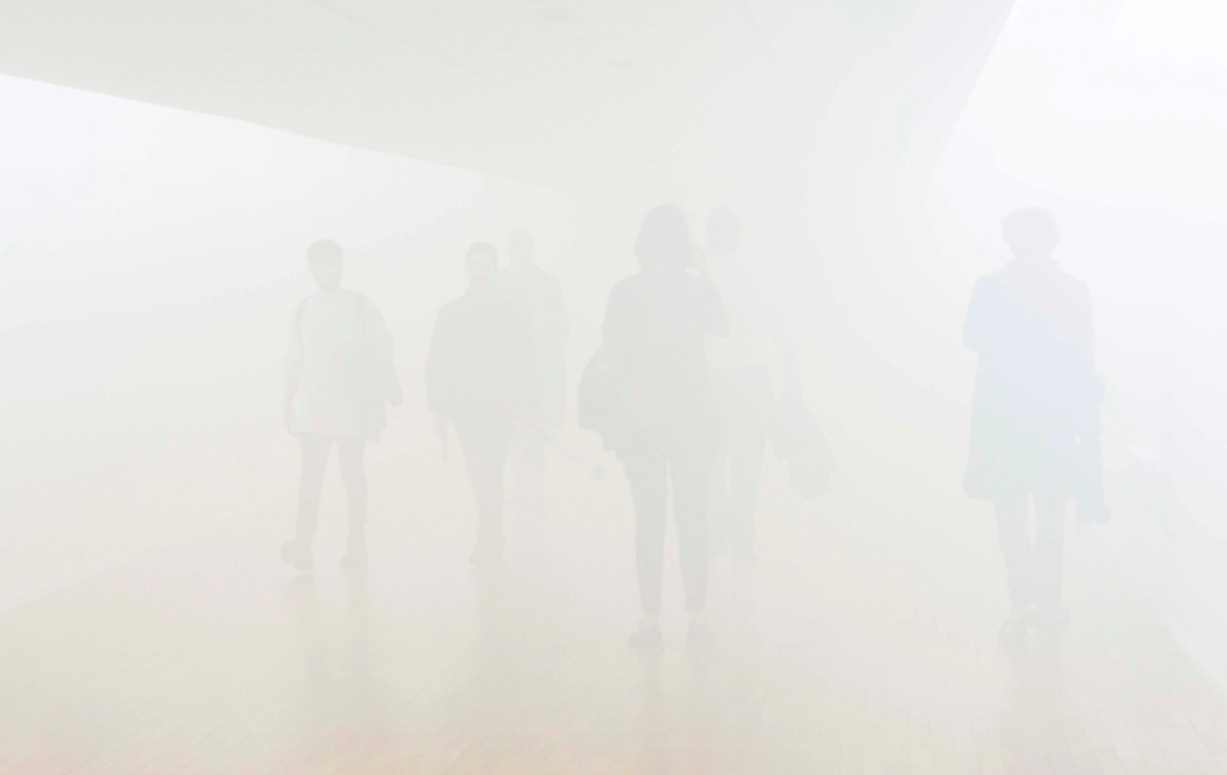vaporisation
Teresa Margolles, Vaporización, 2001. Installation view MoMA PS1 Archives from the exhibition, ‘Mexico City: An Exhibition about the Exchange Rates of Bodies and Values’. II.A.1319. The Museum of Modern Art Archives, New York. INPS1.838.33. Image via MoMA.
Mexican multi-media and conceptual artist Teresa Margolles employs a coercive method of immersion that prevents the viewer from avoiding death. Vaporización is a powerful example: the audience enters a dimly lit room submerged in humidified air. Vapour enters the body, is absorbed by the skin, and inhaled into the lungs. It is inescapable, and without knowing the origin of the water, this could be a profoundly beautiful experience. The water, however, has been used to wash corpses in the morgue.
Teresa Margolles, Vaporización, unknown. Image from Mexican Macabre by Chloe Aridjis for ArtReview, 20 November 2018. Image via ArtReview.
Although there is no physical corpse in the room, it remains an active presence. It becomes tactile in the heat of humidification, settles on the skin, and soaks through clothing. Our bodies become a misty outline. We touch the corpse, but the corpse also touches us as we inhale, enacting a kind of haunting. The most fundamental biological process — breathing — defines a living body, but in Vaporización, it dissolves the distinction between subject and object, viewer and artwork, living and the dead.
I’ll be discussing this artwork (and others) in an online talk for Grave Matters on Tuesday, 5 Apr, 2022 at 5 AM NZST. More on this here.


